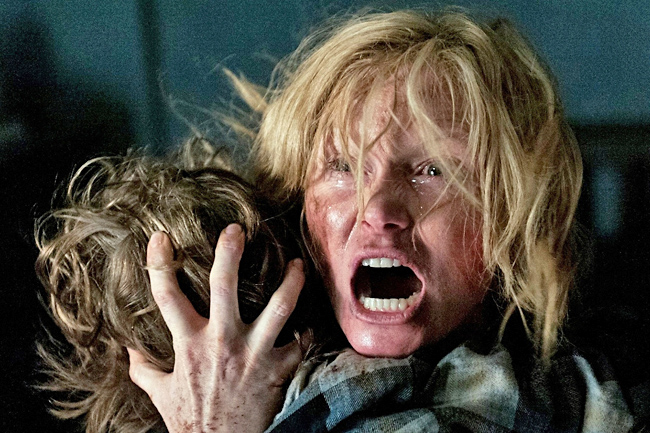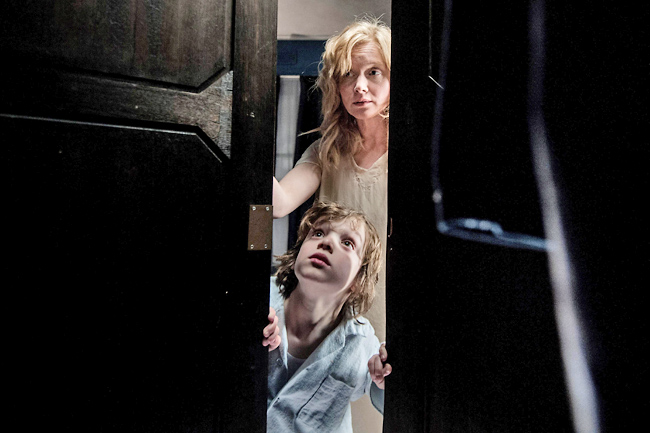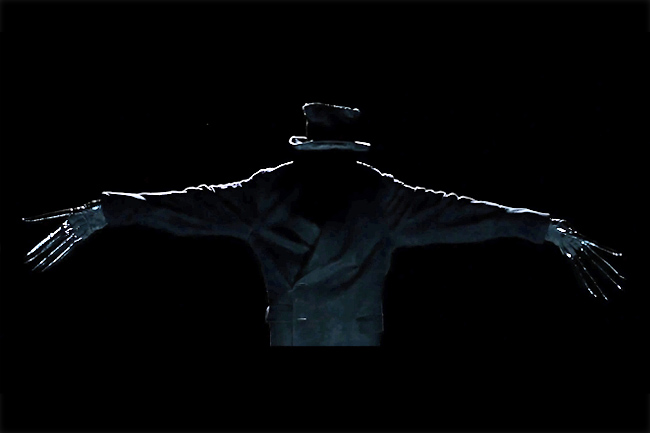There are films that burrow into your soul, clinging to your psyche, and I feel that The Babadook is one of those rare films. It’s profoundly unsettling and emotionally charged that it lingers with you like an unwelcome shadow.
Released in 2014 and written and directed by Jennifer Kent, this Australian psychological horror is what one would call a haunting exploration of grief, motherhood and the toll that trauma takes on the human mind.
If you’ve ever wondered whether fear can be born from something far more intimate than a monster lurking in the shadows, this movie may be the answer.
A SHADOW FROM THE START
From the very first frame, the film ensnares you in its tense, unnerving atmosphere. Amelia, played with exquisite subtlety by Essie Davis, is a widow and a single mother to her son Samuel (Noah Wiseman).
The opening sequence, a dreamlike, almost nightmarish ride through Amelia’s memories of the night her husband died, sets the stage for the darkness to come.
The story begins with the arrival of a mysterious pop-up book – Mister Babadook – which introduces us to the sinister entity that will come to haunt the family. But the Babadook isn’t just a creature in the conventional sense.



It’s a representation of the invisible forces lurking within Amelia: the overwhelming grief, the unresolved pain of losing her husband, and the terrifying descent into madness.
At first glance, the Babadook might seem like just another malevolent spirit, but Jennifer Kent crafts it as a symbol, a manifestation of Amelia’s internal struggles. The figure, with its unsettling top hat and haunting smile, is like something out of a twisted fairy tale.
As the story unfolds, we begin to realise that the true terror lies not in the creature’s presence, but in how it preys on Amelia’s fractured mental state. It grows stronger as Amelia becomes more consumed by her grief, blurring the line between what’s real and what’s imagined.
What makes it so haunting is the emotional intensity that underpins its horror. Unlike many films that rely on jump scares or gore, it creeps up on you, gradually tightening its grip with each passing moment.
The slow-burn terror is felt in every creak of the house, every whisper that lingers in the dark.
The sound design is chillingly effective, the subtle groan of floorboards or the eerie hum of the Babadook’s voice are enough to send a shiver down your spine.
A DESCENT INTO DARKNESS
The claustrophobic nature of the house, with its dimly lit rooms and narrow hallways, only amplifies the sense of confinement and helplessness that permeates the film.
But it’s the performances that elevate the movie from a mere horror film to something much more poignant and meaningful. Essie Davis’ portrayal of Amelia is nothing short of extraordinary.
She captures the complexity of a woman drowning in grief, rage and isolation, yet trying to hold it together for the sake of her son.
There are moments of pure, raw vulnerability in her performance, such as when she is left alone in the house with Samuel, desperate to escape her own mind. The quiet desperation in her eyes, the subtle shifts in her body language, and the tension in her voice make you feel every ounce of her suffering.
Davis transforms Amelia into a woman we can both sympathise with and fear, blurring the lines between maternal love and madness. Admittedly, there were scenes that made me question my own maternal instincts and actions.
Noah Wiseman’s portrayal of Samuel, the troubled and often obnoxious son, is equally compelling.
At first, Samuel may seem like a source of irritation, but as the film progresses, you begin to understand the complexities of his behaviour.
His actions, while disruptive, are not borne of pure defiance, but of his own terror, his struggle to protect his mother from the darkness that’s closing in.
Samuel’s desperation to be heard, to protect his mother, speaks volumes about the psychological toll of trauma, especially on a child.
As the Babadook’s grip tightens on Amelia, we witness a tragic transformation of a woman who was once filled with love and life is now consumed by the darkness within her. It’s a heart-breaking descent, made all the more emotional by the film’s exploration of motherhood.
Somehow the film manages to show that, sometimes, the very act of motherhood can become suffocating, even when you’re trying to do the best for your child.
A DEVASTATING CATHARSIS
The film’s conclusion is both devastating and cathartic. Without giving too much away, the Babadook forces Amelia to confront the trauma she has been running from for so long – ultimately finding a way to live alongside it, rather than be consumed by it.
If you’re looking for a film that provides easy answers or neat resolutions, this movie may not be for you. It’s messy, imperfect, deeply unsettling and at some points, the slow-build might bore you. But that’s what makes it so remarkable.
It challenges you to confront uncomfortable truths about grief, mental health and the ways in which we all carry our own monsters. The Babadook, as a creature, may be imaginary, but the feelings it evokes are all too real. – Izah Azahari




